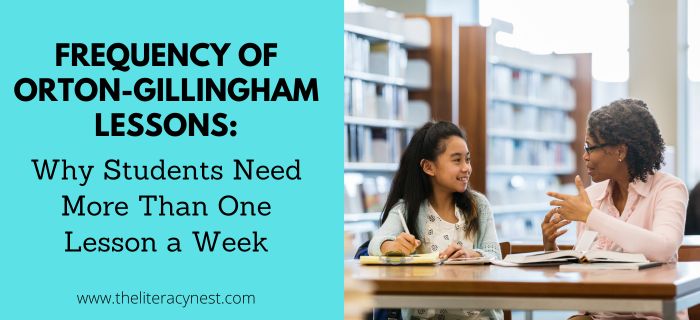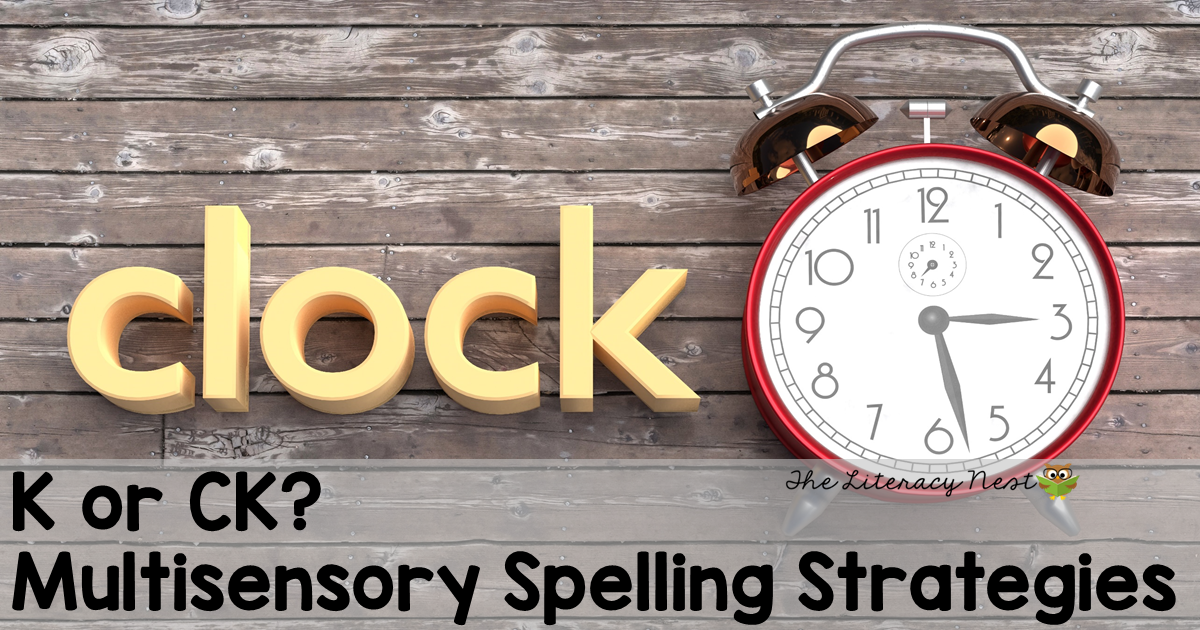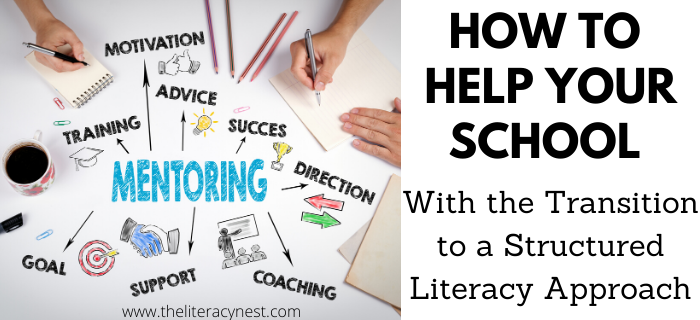Frequency of Orton-Gillingham Lessons: Why Students Need More Than One Lesson a Week
Orton-Gillingham is not a specific program or scope and sequence. Instead, Orton-Gillingham is an approach to teaching reading and spelling. Orton-Gillingham is guided by a set of principles that support structured literacy methodology. Highly trained Orton-Gillingham teachers follow these guiding principles when teaching students. The principles ensure that Orton-Gillingham lessons are systematic and sequential, multisensory, prescriptive, diagnostic, explicit, and flexible. The frequency of Orton-Gillingham lessons matters.

Why Orton-Gillingham is Effective
If we were charged with adding to that list of principles with guidelines that help make Orton-Gillingham as effective as possible, here are some worth considering:
- Uses precision of language in instruction. Dyslexia is at its heart a learning difference in the area of language. Taking care to use language that is concise and precise is important.
- Offers appropriate exposures and repetitions to achieve mastery.
- Provides meaningful review of previously taught concepts.
- Supports the transfer of knowledge from a small group setting to the whole class.
This pamphlet is a valuable tool for helping to explain Orton Gillingham to families.
Frequency of Orton-Gillingham Lessons
Because dyslexia is very often accompanied by co-existing conditions that impact working memory, processing speed, and mastery; it is very important to provide appropriate time to work in direct instruction with a student.
We might state this principle as: Offers appropriate frequency and intensity of instruction.
Dive deeper into this topic! Read What Does An Orton-Gillingham Lesson Look Like?
Once a week is not recommended. The temptation for both parents and practitioners is understandable. Tutoring represents a significant time and financial investment. For children tired from working hard at school, additional sessions may feel daunting. Practitioners may be so eager to help a child, that they compromise on this issue.
Why Frequency of Orton-Gillingham Lessons Matters
There are several excellent reasons for conducting a minimum of two Orton-Gillingham tutoring sessions weekly.
- When a new concept is introduced, students begin to form an understanding, but it is not yet mastered. A student has not yet had a chance to really imprint new learning in their long- term memory.
- Moving learning to long-term memory and being able to recall that learning requires spaced repetition. This is especially true for students who have difficulties with memory. In each lesson, a student may have many opportunities for repetition, but it is not until they practice and recall at longer intervals that the learning truly becomes their own.

Taking a Closer Look
People often suppose that progress with once-weekly lessons will proceed at half the pace of twice-weekly lessons. That is an optimistic viewpoint. In a typical month, a twice-weekly student would have eight lessons, and a once-weekly schedule would only have four lessons. Add to that the inevitability of illness, holidays, or inclement weather.
For example, if each student has one holiday and one illness each month, the twice-weekly student would still have six lessons while the weekly student would be down to two lessons, only 1/3 the number of the twice-a-week student.
But it isn’t just the quantity of lessons that is affected by frequency, but also the efficacy.
In a twice-weekly format, typically students will be introduced to new concepts at a pace appropriate for them. For example, for many students that might be a new concept for each lesson. The first lesson of the week builds familiarity, and the student begins to transfer the learning into their corpus of knowledge. When the second lesson of the week comes, that learning is still relatively fresh. Guiding questions and prompting often lead to recall and further practice moves the concept further toward mastery even as a new, often related concept is introduced.
Having the two lessons on nonconsecutive days is beneficial in multiple ways.
- The structure helps organize the student’s week, makes a predictable and reliable schedule to avoid excessive missed lessons, and gives time for learning to be consolidated by rest.
- Spacing lessons in this way also helps make intervals between lessons consistent. For a student who meets twice weekly, a missed lesson results in only a seven-day gap between lessons.
Take a closer look at the goals of intervention. Listen to Together in Literacy episode 2.11, How to Keep Your Eye on the Goal in Intervention!
When lessons occur less frequently…
When lessons occur less frequently, students are likely to need significant reteaching to make it back to the ending point of the previous lesson. This in turn reduces the available time for reinforcing older concepts and introducing new learning, slowing down the overall progress.
Instead of introducing new learning in every new lesson, it may be more like a new concept every lesson and a half. A single missed lesson results in a 14-day gap between tutoring sessions. This is like having a spring break every time there is a snowstorm, illness, or unavoidable conflict.
I imagine this process of mastery like a staircase with concepts that move up step by step from unknown to mastered. Along that staircase, there might be mastered concepts, concepts that need a refresher or reminder, almost mastered ideas, and areas in which the student still needs support. The very bottom of the stairs is unknown material. When a student comes to lessons twice a week, it keeps those concepts from sliding back down a step. The concept that has just been introduced may not have made it fully to the first step, but enough is retained long enough that the instructor can build on where the student is and move to the next stage of knowing.
If you’re seeking to find a trained Orton-Gillingham professional, The Literacy Nest Tutor Directory can help.
Are you looking for professional development that will help you better support your students with dyslexia? The Literacy Nest has a membership for that…
Building Readers for Life Academy is a monthly membership program that empowers educators AND families. It dives into structured literacy and strategies for ALL learners. With BRFL Academy, you’ll learn what it takes to help EVERY student become a reader for life.
Join Building Readers for Life Academy today and pay just $1 for your first 30 days! Click here.






